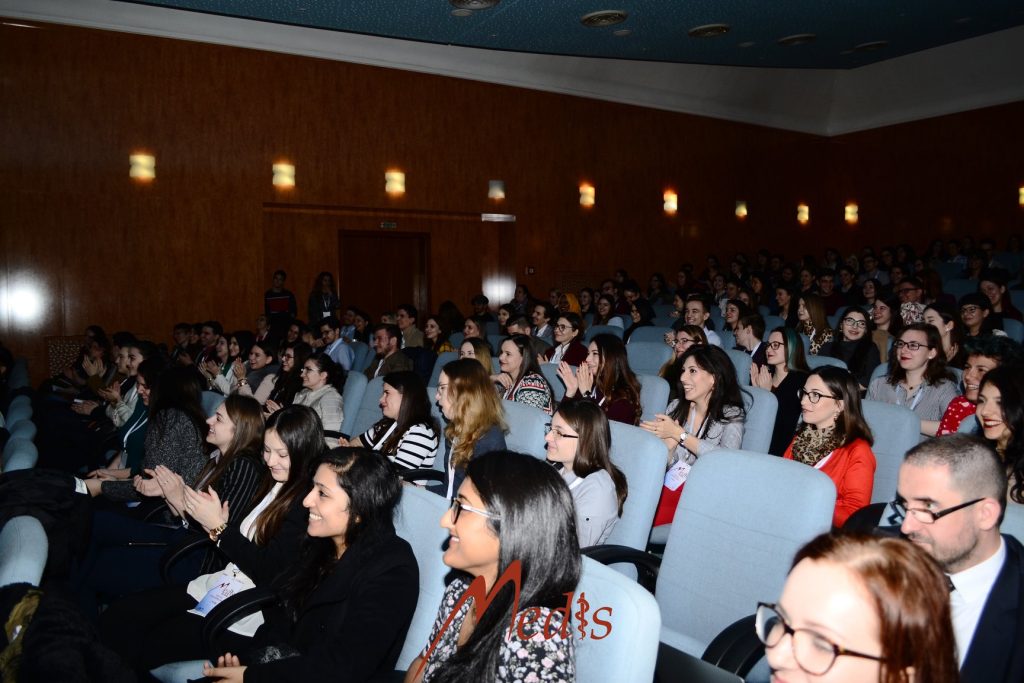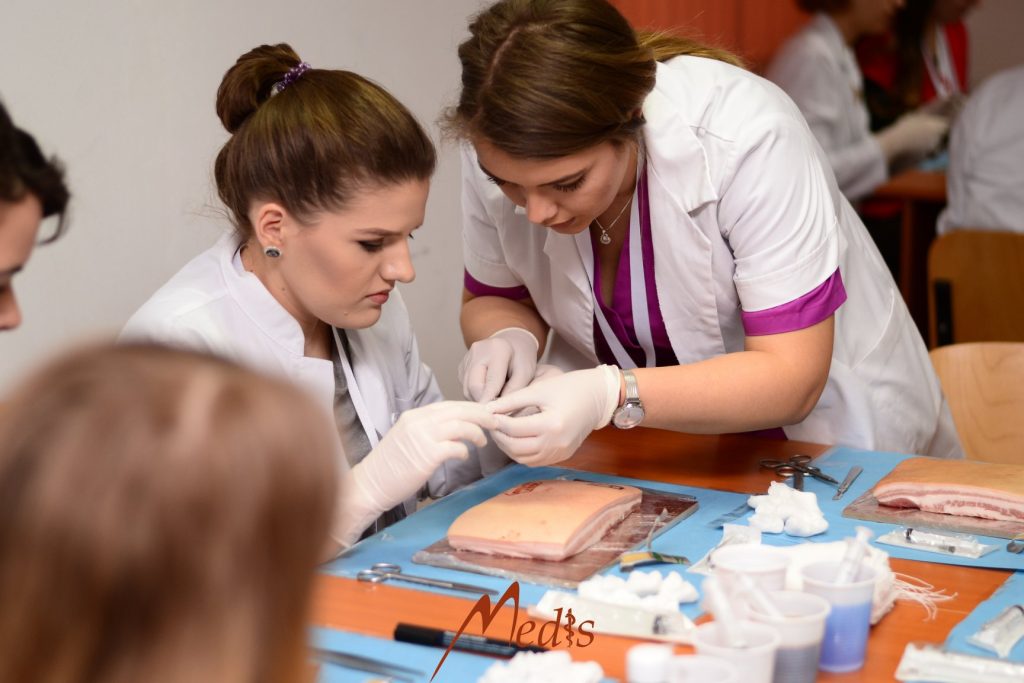Fees & Guidelines
we invite you to join us on this transformative journey

Keynote Lectures
Unlock the Future: Join Us for an Unforgettable Keynote Experience.
Elevate your understanding through engaging discussions, real-world case studies, and interactive sessions while exploring groundbreaking ideas and innovations that are shaping the landscape of medicine.

Conferences
Our mission extends beyond the confines of lecture halls and conference rooms. We aim to cultivate a sense of community among our participants, fostering connections that will endure throughout their professional journeys.
Through networking events, mentorship programs, and collaborative initiatives, we seek to build a network of support that transcends geographical and institutional boundaries.

Workshops
Join our Workshops, where knowledge meets practice for a transformative experience in healthcare excellence. We are committed to curating a diverse program that spans the spectrum of medical specialties, from the latest advancements in clinical practice to groundbreaking research at the forefront of medical science.
Dive into practical sessions led by experienced practitioners, enhancing your clinical skills and medical expertise.

Social events
Our mission extends beyond the confines of lecture halls and conference rooms. We aim to cultivate a sense of community among our participants, fostering connections that will endure throughout their professional journeys.
Through networking events, mentorship programs, and collaborative initiatives, we seek to build a network of support that transcends geographical and institutional boundaries.





Abstract guidelines
This year, there are two categories for the Oral Presentations: PowerPoint presentations and Poster presentations on these sections Clinical Sciences and Surgical Sciences.
If you have more than one abstract accepted, please note that you will be contacted by our team to select which of them will be presented, given that you can not present:
in both the PowerPoint and Poster Presentations in multiple categories
more than one abstract in the same section.
Who is submitting the abstract?
In order to submit an abstract, the author needs an Active Participant membership. All co-authors need to have their details submitted with the abstract, otherwise their registration will not be valid. A presenting author can submit a MAX of 2 abstracts. All the submitted abstracts have to tackle different subjects. If the participants submit more drafts of the same abstract, only the last version sent before the deadline will be taken into consideration. After the deadline, the submitted abstract cannot suffer any further adjustments.
If you encounter any problems, please contact us via the following e-mail at abstract@medistimisoara.ro
Categories of Abstract
- PowerPoint Presentation
The abstracts, regardless of their subject, have to fit in one of the following sections:
Original Study
Case Report
Review
Original Study
Oral Presentation
In advance, every participant that has been accepted for the Oral Presentations will have to send their visual support (.ppt/.pptx for the PowerPoint presentations or the electronic format of the Poster for the Poster Presentations) as it is stated in terms&conditions. Moreover, participants accepted for the Poster Presentations must ensure they hand over their poster to the Organising Committee during the check-in process.
Presenter's duties
The Presenters cannot leave the room before the end of the last presentation from their section (Review, Original Study, Case Report); in the event in which they can not respect this rule, they will be disqualified.
The Organising Committee of the Medis is not responsible if any of the conditions specified above is not met. The official language of the Congress is English. This being given, the visual support (PowerPoint or Poster), the oral presentations and the short Q&A session for each participant will all be held in English. No other language is accepted.
The presentation time for each participant will be 7 minutes for PowerPoint Presentations, and 5 minutes for Poster Presentations, followed by a 3-minute Q&A session (both the professors of the Scientific Committee and the other Presenters will be allowed to ask questions). You will be notified during the presentation when there are 3 minutes and respectively 1 minute left of the presentation time. Please note that exceeding the time limit will influence your final score!
Common Questions
If requested, the participant must provide the raw data file used for statistical analysis and the complete list of references if applicable.
Background: It stands as a hypothesis for your study. It is a brief description of what is known about the subject you chose and its significance for your research.
Materials and Methods: Relevant details about how the study was conducted, how the data was processed and how it might vary; specify the number of subjects and the steps taken in order to execute your research.
Results: Present the main outcome of your original study in an attractive manner. Create a strong link between the original hypothesis and the final results, relating all of the ultimate data to it.
Conclusion: This section allows you to summarise the topic and make an objective comparison with the updated specialty literature. You can also add a powerful statement that comprehends the entire idea of the Original Study, allowing new perspectives over your abstract.
KEYWORDS are mandatory as they allow you to highlight the most important aspects of your abstract. They are a tool to help indexers and search engines find relevant papers. They should be representative but also specific for your paper.
If requested, the participant must provide the raw data file used for statistical analysis and the complete list of references if applicable.
Patient’s files are the key-materials when writing a case report. You can find valuable evidence and use it in your abstract, making it unique.
Background: Should emphasise the importance of the chosen subject, as well-as the major factors that have influenced the case. In order to do so, we recommend having in mind the following: context, relevance and importance. Case description: History (describe briefly your patient’s medical history, to set-up a broader context and create an important link between a possible aetiology and the actual condition) and physical examination (acknowledge important details that can be revealing).
Conclusion: This section allows you to summarise the topic and make an objective comparison with the updated specialty literature. Make sure this section reflects the significance of the clinical situation for medicine.
KEYWORDS are mandatory, as they allow you to highlight the most important aspects of your abstract. They are a tool to help indexers and search engines find relevant papers. They should be representative but also specific for your paper.
Abstracts of Case Reports should be consistent with the CARE guidelines and authors should send, if requested, the raw data file used for statistical and the complete list of references if applicable.
If requested, the participant must provide the raw data file used for statistical analysis and the complete list of references if applicable.
Background: It stands as a hypothesis for your study. It is a brief description of what is known about the subject you chose and its significance for research. Materials and Methods: Relevant details about the study that were used for this paper, number of patients, basic characteristics (age group, gender etc.). Also mention why you chose these studies and why are they relevant for your paper..
Results: Present the main outcome of your review in an attractive manner. Create a strong link between the original hypothesis and the final results, relating all of the ultimate data to it. Don’t try to include everything. Just provide a very brief summary of your main findings.
Conclusion: This section allows you to summarise the topic and make a statement about the results you obtained. Your conclusion may be in line with your original hypothesis or not. Either way, you have to be very clear.
KEYWORDS are mandatory, as they allow you to highlight the most important aspects of your abstract. They are a tool to help indexers and search engines find relevant papers. They should be representative but also specific for your paper.
Abstracts of Reviews should be consistent with the PRISMA guidelines and authors should send, if requested, the raw data file used and the complete list of references if applicable.
The format accepted for the presentation is .ppt/.pptx; We recommend using a font of at least a 22 font size for the text;
Do not fill your slides with blocks of text. We suggest you write exclusively the main ideas on the slides and tell the whole story behind them through your convincing speech;
Remember the importance of diagrams, images and animations; All the tables and graphics must contain a title and a legend.
We recommend having the following structure for your visual support:
The first slide should contain the following information: the title of the paper, the author’s name, the affiliation and the logos pertaining to the affiliation and to the congress.
The next slide should consist of a table of contents. It is optional, but good to have. It helps your audience to better comprehend the presentation.
In the succeeding 1-2 slides you should have an introduction. In this part, you should present the subject which you are going to speak about.
After the introduction, there will be a number of 15 to 20 slides that should contain the main ideas of the paper organised in a brief manner (Materials and Methods + Results).
Your conclusion should consist of 1-2 slides in which you should have a “take home” message for your audience. You should concentrate all your findings in a concise way. The last slide should contain all your references.
You must ensure that your poster is ready in time for you to hand over your poster at check-in. The organisers will not cover the costs of printing/manufacturing the posters.
Please follow the measurements and format required (A0; no pre-imposed template). Do not overfill your poster with too much text. We recommend the 40-40-20 rule (40% blank space, 40% visuals, 20% text). Ensure that the font you use is amongst the Sans Serif category.
Emphasise your ideas through relevant pictures, tables or graphics. Make sure they are accompanied by a title and legend. Try to go with no more than 2 colours as using more can become rather tiring to the eye. If you need help pairing colours, the colour wheel shall become your best friend.
Stay away from the red and green combination. Be coherent with your order. Make sure your poster is easy to follow and the viewer doesn’t have to jump from a place to another in order to understand.


